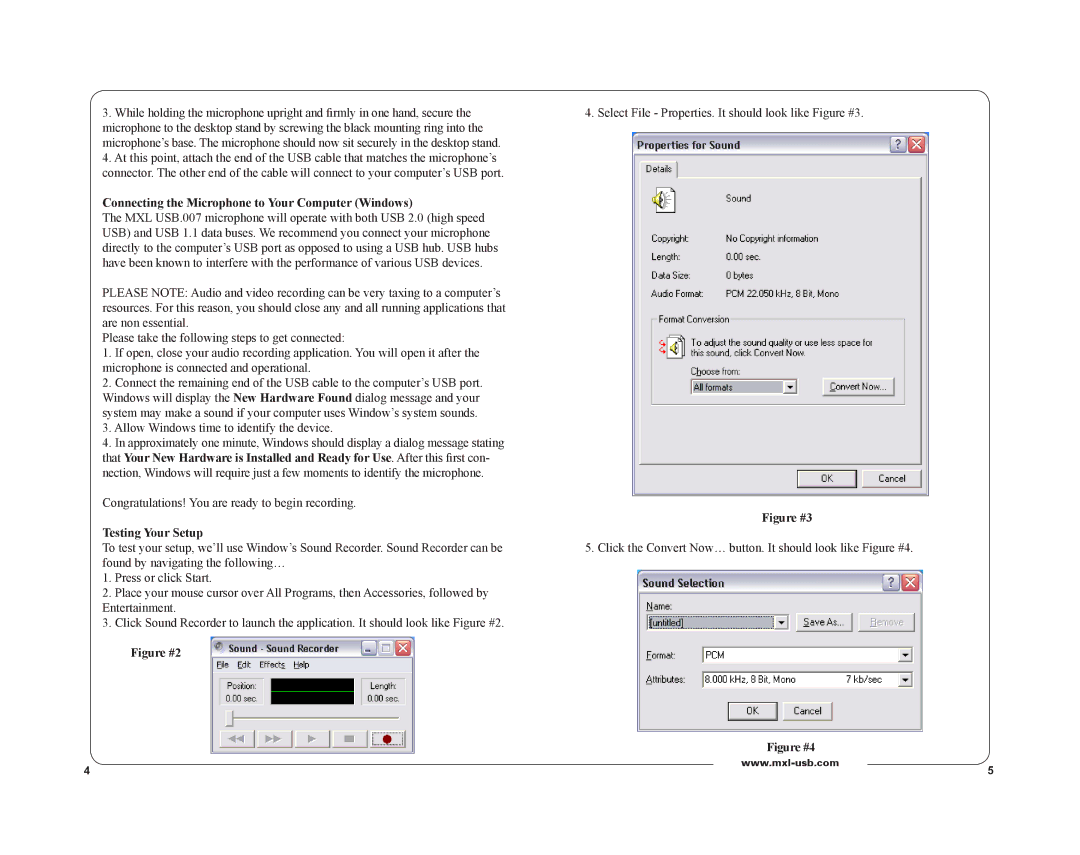
3.While holding the microphone upright and firmly in one hand, secure the microphone to the desktop stand by screwing the black mounting ring into the microphone’s base. The microphone should now sit securely in the desktop stand.
4.At this point, attach the end of the USB cable that matches the microphone’s connector. The other end of the cable will connect to your computer’s USB port.
Connecting the Microphone to Your Computer (Windows)
The MXL USB.007 microphone will operate with both USB 2.0 (high speed USB) and USB 1.1 data buses. We recommend you connect your microphone directly to the computer’s USB port as opposed to using a USB hub. USB hubs have been known to interfere with the performance of various USB devices.
PLEASE NOTE: Audio and video recording can be very taxing to a computer’s resources. For this reason, you should close any and all running applications that are non essential.
Please take the following steps to get connected:
1.If open, close your audio recording application. You will open it after the microphone is connected and operational.
2.Connect the remaining end of the USB cable to the computer’s USB port. Windows will display the New Hardware Found dialog message and your system may make a sound if your computer uses Window’s system sounds.
3.Allow Windows time to identify the device.
4.In approximately one minute, Windows should display a dialog message stating that Your New Hardware is Installed and Ready for Use. After this first con- nection, Windows will require just a few moments to identify the microphone.
Congratulations! You are ready to begin recording.
Testing Your Setup
To test your setup, we’ll use Window’s Sound Recorder. Sound Recorder can be found by navigating the following…
1.Press or click Start.
2.Place your mouse cursor over All Programs, then Accessories, followed by Entertainment.
3.Click Sound Recorder to launch the application. It should look like Figure #2.
Figure #2
4. Select File - Properties. It should look like Figure #3.
Figure #3
5. Click the Convert Now… button. It should look like Figure #4.
Figure #4
|
|
|
4 | 5 | |
|
